Exhaust systems are a crucial component of any vehicle’s engine, responsible for diverting harmful gases away from the driver and passengers. However, like any mechanical system, they are not impervious to wear and tear, requiring occasional maintenance and repair.
One common issue that arises with exhaust systems is a cracked or broken pipe, which can cause loud and disruptive noises, decreased engine performance, and even hazardous fumes to leak into the cabin.
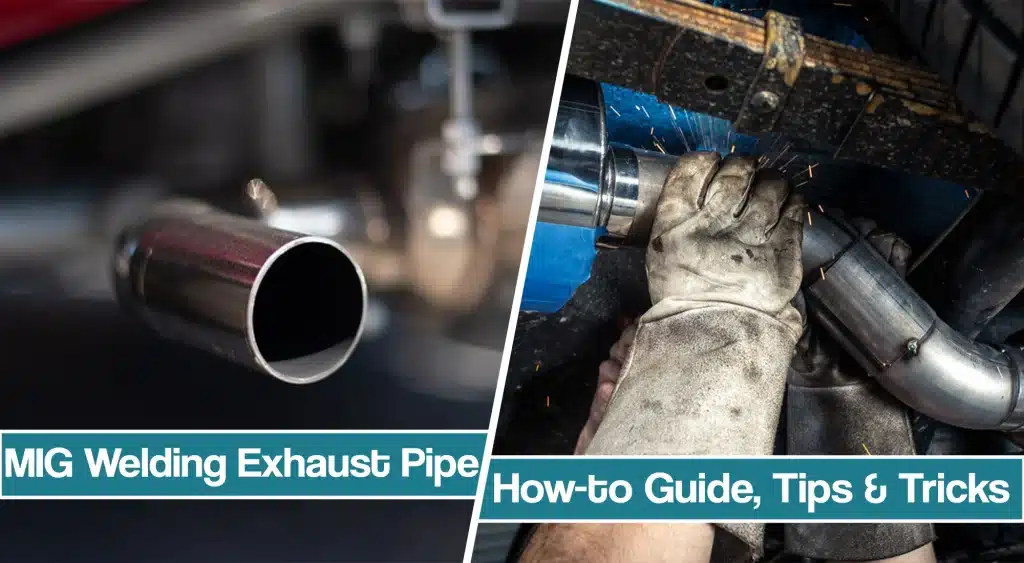
In this article, we will explain how to MIG weld exhaust pipe, a popular technique used by both professional mechanics and DIY enthusiasts alike to fix this problem.
Why Is Exhaust Welding Challenging?
The high heat generated during the welding process can cause the thin metal to warp or distort, especially if you are not careful. This can lead to misaligned or poorly fitting parts, which can cause leaks or other problems.
If the weld is not done properly, it can create stress points in the exhaust piping metal that can eventually lead to cracking. This is especially common if the weld is too hot or if the welder is using the wrong type of filler material.
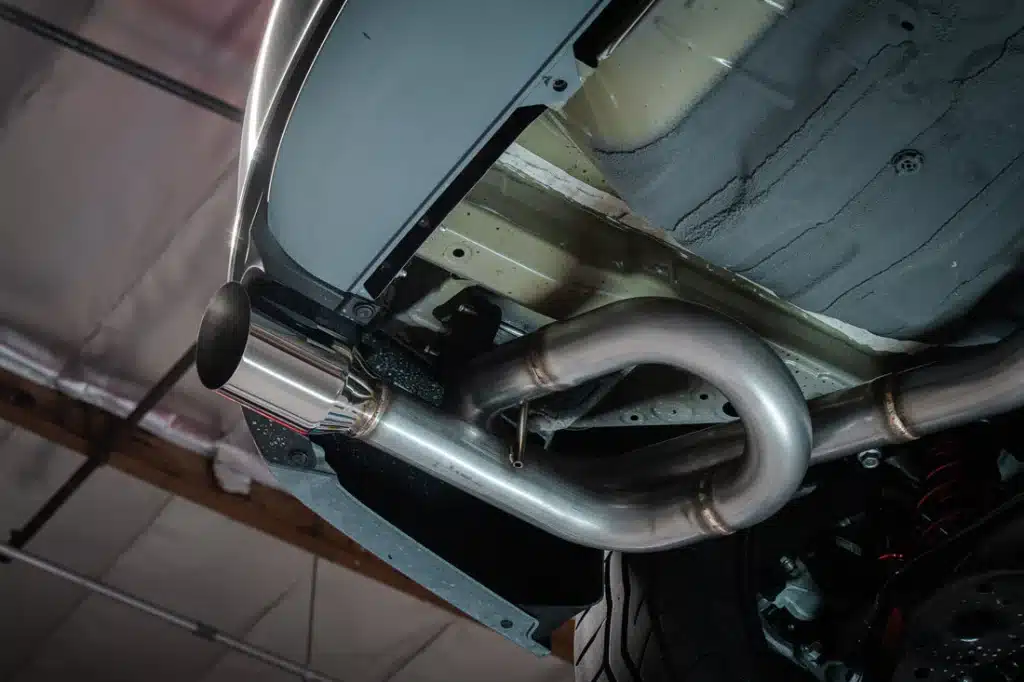
Welding can cause changes in the metal’s chemistry, which can make it more susceptible to corrosion over time. This can be especially problematic if the welder is using the wrong type of filler material or if the metal is exposed to moisture or other corrosive elements. Finally, the overall quality of the weld can be an issue if the welder is not experienced or if they are using inferior equipment. A poorly executed weld can compromise the integrity of the exhaust system.
What Are The Preferred Exhaust Welding Methods?
The two most commonly used methods for welding exhaust pipes are MIG (metal inert gas) and TIG (tungsten inert gas) welding. MIG welding uses a wire feed system to supply a consumable electrode and a shielding gas to protect the weld from contamination. It is a fast and efficient process that is relatively easy to learn and is ideal for welding thin materials.
One key advantage of MIG welding is its versatility. It can be used to weld a wide range of materials, including steel, stainless steel, and aluminum.

This makes it a popular choice for welding exhaust systems, which are typically made of steel or stainless steel. MIG welding can produce high-quality welds at a rate of up to 8 feet per minute, making it a very efficient process. This is important in a production environment, where time is money.
TIG welding, on the other hand, is a slower and more precise process that is better suited for more complex welds. TIG welding produces high-quality welds with excellent control over the heat input, making it ideal for welding exotic materials like titanium and Inconel. Meanwhile, TIG welding is slower, the equipment is more expensive and it takes time to master the technique. However, since it yields high-quality and good-looking welds, many choose it later on, while welders that like to get the job done quicker and cheaper go for MIG welding.
How To MIG Weld Exhaust Pipes – Overview
MIG welding exhaust pipes requires attention to detail, proper equipment, and MIG welder’s settings, and a steady hand to produce a strong, durable bond that will withstand the harsh conditions of the exhaust system. Before starting the welding process, it’s important to thoroughly clean the area around the crack or break to remove any dirt, rust, or debris that could interfere with the welding process.
The next step is to select the correct type of filler material, typically a stainless steel wire, that matches the grade and thickness of the exhaust pipe. The welder should then set the MIG welder to the appropriate settings for the material and thickness being welded.
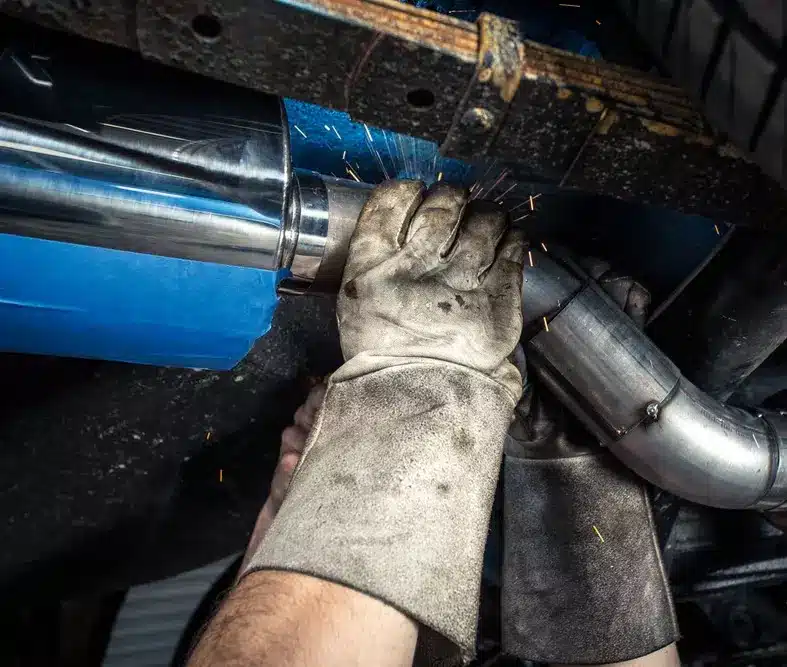
When welding, the welder should use a steady hand and make small, controlled welds, allowing the metal to cool between passes to minimize warping and distortion. It’s important to maintain a consistent speed and angle while welding to ensure a strong, uniform bond.
Throughout the welding process, it’s important to monitor the quality of the weld and make any necessary adjustments to the settings or technique. After the welding is complete, the weld should be thoroughly inspected for any cracks, voids, or other defects.
MIG Welder And Preferred Setting for Exhaust Pipes
To successfully MIG weld exhaust pipes, you will need a MIG welder that is capable of welding thin materials and has good heat control. Generally, a MIG welder with a low amperage range (around 30-140 amps) is ideal for welding thin exhaust pipes.
In addition to amperage, a MIG welder with adjustable voltage and wire feed speed controls can help you achieve better heat control and a more precise weld. Some welders also have a feature called “synergic welding,” which automatically adjusts the voltage and wire feed speed based on the material being welded. This can make it easier to achieve a consistent and high-quality weld, especially for novice welders.
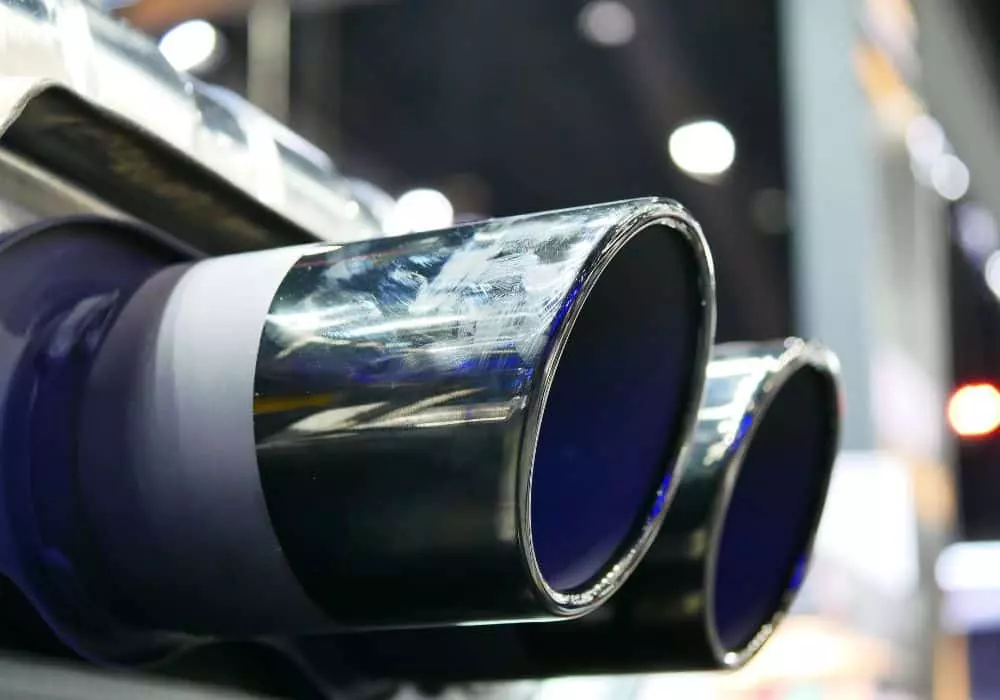
Some of the latest MIG welders will also provide MIG pulse. This is similar to TIG welding pulse, a feature that limits the heat input without impacting the penetration. Even though it can impact the overall price, pulsed MIG is crucial for great results on thin materials, such as the one used for exhaust pipes.
MIG Filler Wire
The two most common types of stainless steel filler wire used for welding exhaust pipes are 304 and 409. 304 stainless steel is a general-purpose stainless steel that is suitable for welding a wide range of materials, including exhaust pipes.
It has good corrosion resistance and high ductility, which makes it easy to work with and ideal for thin materials like exhaust pipes.
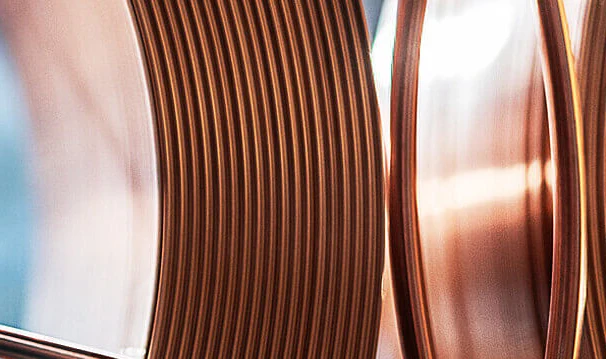
409 stainless steel is a ferritic stainless steel that is specifically designed for use in exhaust systems. It is more heat-resistant than 304 stainless steel and can withstand the high temperatures and corrosive gases found in exhaust systems. It also has good weldability and is easy to work with, making it a popular choice for welding exhaust pipes.
It is important to ensure that the wire is properly stored and handled to prevent contamination. Stainless steel wire should be stored in a dry, clean environment and handled with clean gloves to prevent oil or grease from contaminating the weld.
Shielding The Exhaust Pipe Weld
The 90/10 Argon/CO2 gas mixture is ideal for welding stainless steel, which is commonly used in exhaust systems due to its corrosion resistance and ability to withstand high temperatures. This gas mixture helps to produce a clean, strong weld that is resistant to corrosion and can withstand the harsh conditions of the exhaust system. This gas mixture provides good arc stability and penetration, while also protecting the weld pool from oxidation and contamination.
It is important to ensure that the gas flow rate is set correctly when welding exhaust pipes with this gas mixture. The recommended flow rate is typically between 20-25 cubic feet per hour (CFH), but this may vary depending on the specific welding conditions and the diameter of the nozzle used.
Weld Preparation
Proper weld preparation is essential when MIG welding exhaust pipes to ensure that the weld is strong, durable, and resistant to corrosion. The surface of the exhaust pipe should be cleaned thoroughly to remove any dirt, grease, or other contaminants that could interfere with the weld. This can be done using a wire brush or a grinder with a flap disc attachment.
Tacking the pieces together before welding helps to ensure that they are properly aligned and reduces the likelihood of the pieces moving during welding. Tacking should be done with a low amperage setting to avoid overheating the metal. The exhaust pipes should be properly fit together before welding to ensure that there are no gaps or misalignments that could affect the strength of the weld.
Welding Technique When MIG Welding Exhaust Pipes
Begin by placing the MIG gun at a 90-degree angle to the metal surface and initiate the arc. The weld should start at the tack weld and should be done in a steady, controlled motion. The MIG gun should be held at a 15 to 30-degree angle to the surface of the metal. This angle helps to ensure good penetration while avoiding burn-through or warping.
Exhaust pipes should be welded in short sections to prevent overheating and warping of the metal. The weld should be allowed to cool between sections to avoid overheating the metal.
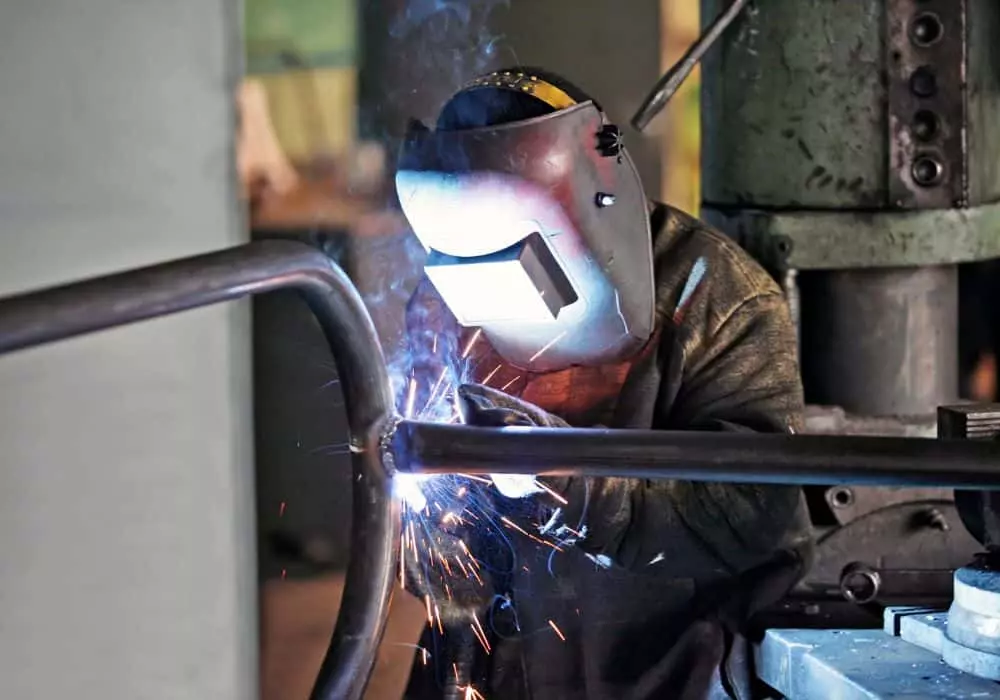
Too much heat can cause the metal to warp or distort, while too little heat can result in a weak weld. Another reason for burn though is slow welding speed. By being slow, more heat is concentrated in the weld area. The weld area should be shielded by the welding gas to prevent oxidation and contamination of the weld. The gas flow rate should be set correctly to ensure good gas coverage.
Post Weld Treatment
Not all post-weld treatments are required for the welding exhaust pipe. The specific treatment needed will depend on the type of metal being welded, the environment in which the welded area will be used, and other factors. Grinding the weld bead flush with the surface of the metal can improve the appearance of the weld and make it more resistant to corrosion. It can also remove any sharp edges that could cause injury. Buffing and polishing the weld can improve its appearance and make it more resistant to corrosion. It can also smooth out any rough spots or imperfections in the weld.
Tips for Successful Exhaust Pipe MIG Welding
- Use the right MIG welder: Make sure you have a MIG welder with the right amperage and a variable wire speed control.
- Avoid welding near the gas tank or when the exhaust pipe is attached to car.
- Use the right filler wire: Use a filler wire that matches the material being welded, such as 308L for stainless steel.
- Use the right shielding gas: Use a shielding gas that is appropriate for the material being welded, such as pure argon for aluminum or a mixture of argon and carbon dioxide for steel.
- Clean the metal: Make sure the metal being welded is clean and free of any dirt, rust, or other contaminants that can weaken the weld. Also, make sure you wear protective gear and follow safety tips.
- Tack weld the pieces: Tack weld the pieces together before starting the main weld to ensure proper alignment and reduce the risk of warping.
- Weld in short sections: Weld the exhaust pipe in short sections, allowing each section to cool before moving on to the next and reaching even weld.
- Use the right welding technique: Use a weave or zigzag motion to distribute heat evenly and create a wider weld bead.
- Control the heat: Monitor the heat and high amperage to avoid burning through the metal and causing warping.
- Watch for signs of contamination: Be on the lookout for signs of contamination, such as discoloration, which can indicate that the weld is not properly shielded by the gas.
- Post-weld treatment: Consider post-weld treatment such as grinding, polishing, or coating to improve the appearance and durability of the weld.
Conclusion
Exhaust pipe welding is a common and effective way to join sections of exhaust tubing together. While it may seem straightforward, there are several factors to consider to ensure a successful weld, including the type of MIG welder, filler wire, shielding gas, and proper weld preparation and technique.
By taking these factors into account, as well as following some key tips for successful MIG welding, such as controlling heat and using post-weld treatment, you can create high-quality, long-lasting welds on your exhaust system. You can use other methods, such as TIG, Flux core or Stick welding, but MIG welding is great when you need to get the job done easily.
Resources
- https://www.garagejournal.com/forum/threads/how-do-you-mig-weld-exhaust.307005/
- https://bakersgas.com/blogs/weld-my-world/welding-video-welding-exhaust-tubing
- https://www.mig-welding.co.uk/forum/threads/tips-for-butt-welding-exhaust-pipe.67107/
- https://burnsstainless.com/blogs/articles-1/welding-exhaust-systems-part-1





